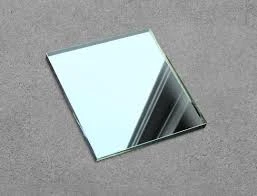

The Versatility and Benefits of Tempered Glass
Tempered glass, also known as toughened glass, has gained immense popularity across various industries due to its superior strength and safety features. This type of glass is produced through a thermal process that involves heating the glass to high temperatures and then rapidly cooling it. This process alters the internal structure of the glass, making it much stronger than ordinary glass. In this article, we will explore the characteristics, applications, and advantages of tempered glass.
Characteristics of Tempered Glass
One of the primary features of tempered glass is its high strength. It is approximately five to six times stronger than standard glass of the same thickness. This enhanced durability allows tempered glass to withstand high impacts, making it ideal for applications that require resilience, such as in windows, doors, and facades.
Another important characteristic is its safety. When broken, tempered glass shatters into small, blunt pieces rather than sharp shards, significantly reducing the risk of injury. This safety feature makes it a preferred choice in environments where safety is a paramount concern, such as in automobiles and buildings with high foot traffic.
Furthermore, tempered glass can endure extreme temperature changes, making it suitable for use in locations with significant temperature variations. This thermal resistance allows tempered glass to be used in kitchens, shower enclosures, and other areas where hot and cold conditions may occur.
Applications of Tempered Glass
The applications of tempered glass are vast and varied. In the construction industry, it is commonly used for windows, facades, and curtain walls. Its combination of strength and safety makes it a reliable choice for modern architecture, allowing for expansive glass surfaces that enhance natural light while ensuring structural integrity.

In the automotive sector, tempered glass is utilized for windshields and side windows. Its robustness provides enhanced protection for passengers and contributes to the structural toughness of vehicles. Similarly, in the realm of interior design, tempered glass is often used in shower doors, privacy screens, and glass partitions, where both aesthetics and safety are important.
Moreover, tempered glass has found its way into the manufacturing of electronic devices. Screens for smartphones, tablets, and laptops frequently use tempered glass to provide both protection and clarity. This trend reflects the increasing demand for durable and scratch-resistant materials in the tech industry.
Advantages of Tempered Glass
The benefits of tempered glass extend beyond its strength and safety features. One of its major advantages is its versatility. It can be manufactured in various shapes, sizes, and thicknesses, making it suitable for a wide range of applications. Additionally, tempered glass can be customized with various finishes, textures, and tints to meet aesthetic preferences and functional requirements.
Another significant advantage is its ease of maintenance. Tempered glass is easy to clean and resistant to stains, making it a practical choice for both commercial and residential applications. This feature is particularly important in high-traffic areas or spaces that require frequent cleaning, such as restaurants and offices.
Lastly, tempered glass is environmentally friendly. It is fully recyclable, and its durability reduces the need for replacements, which significantly lowers waste. By choosing tempered glass, industries can contribute to sustainability efforts while enjoying the benefits of a robust material.
Conclusion
In summary, tempered glass is a remarkable material that offers a blend of strength, safety, and versatility. Its unique properties make it suitable for a wide array of applications, from construction to automotive and electronics. As industries continue to seek durable and aesthetically pleasing materials, the demand for tempered glass is likely to grow. With its advantages, tempered glass stands out as an essential component in modern design and engineering, paving the way for innovative solutions in various fields.